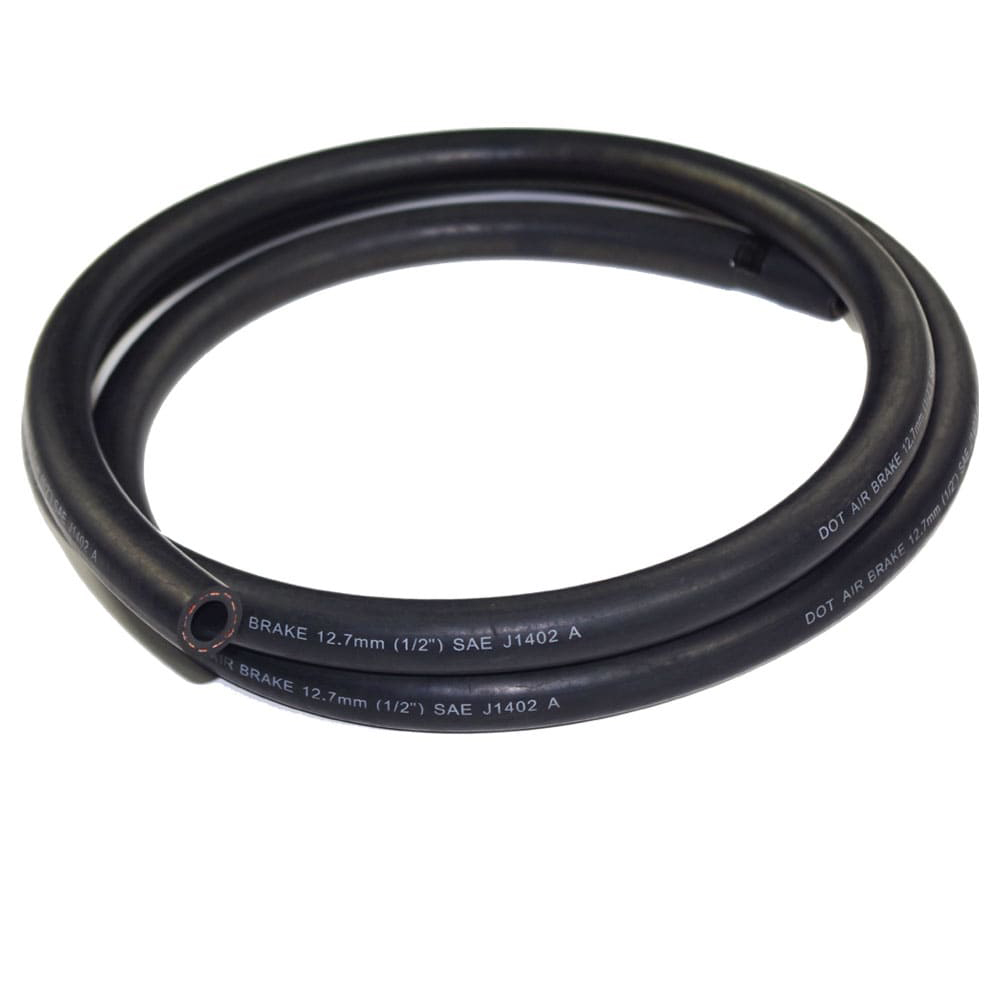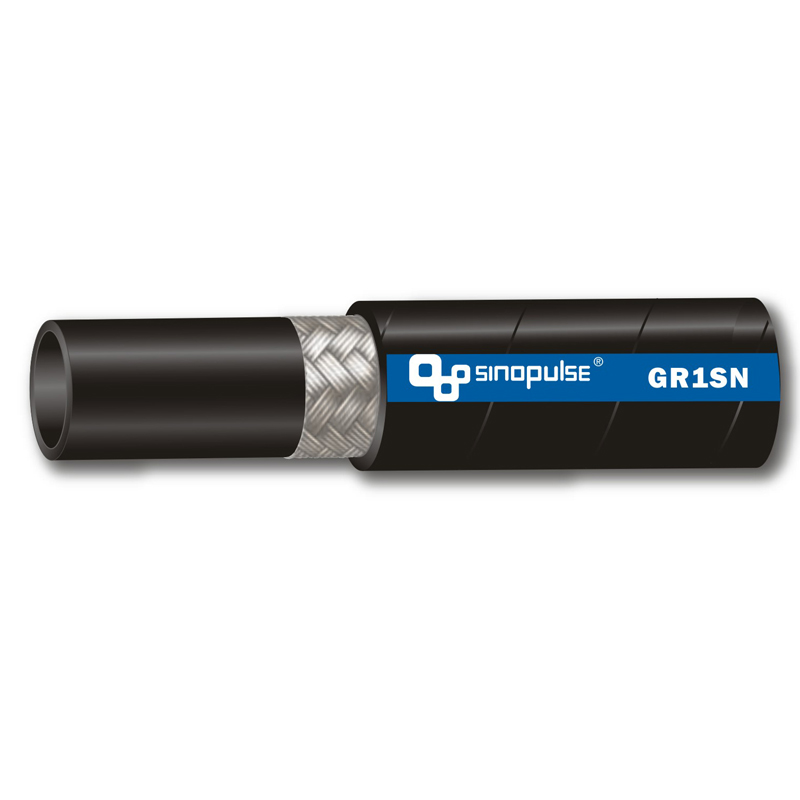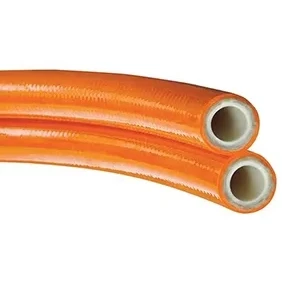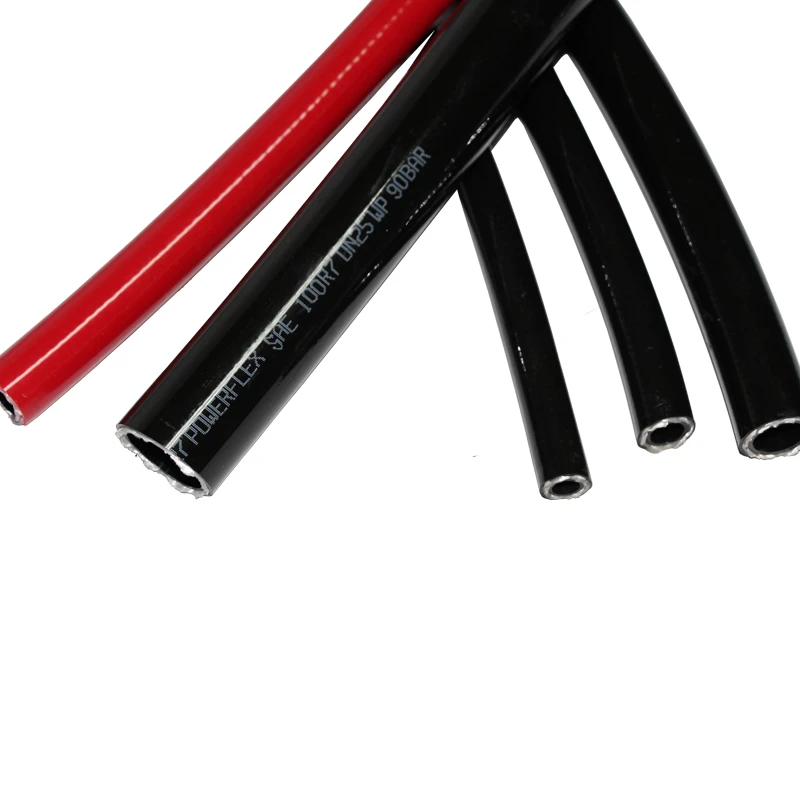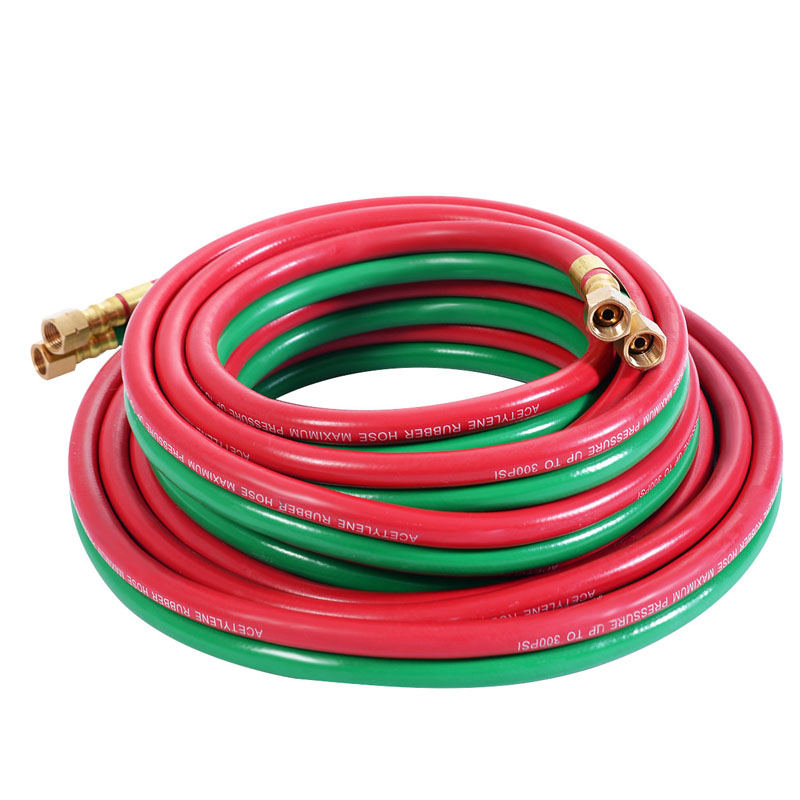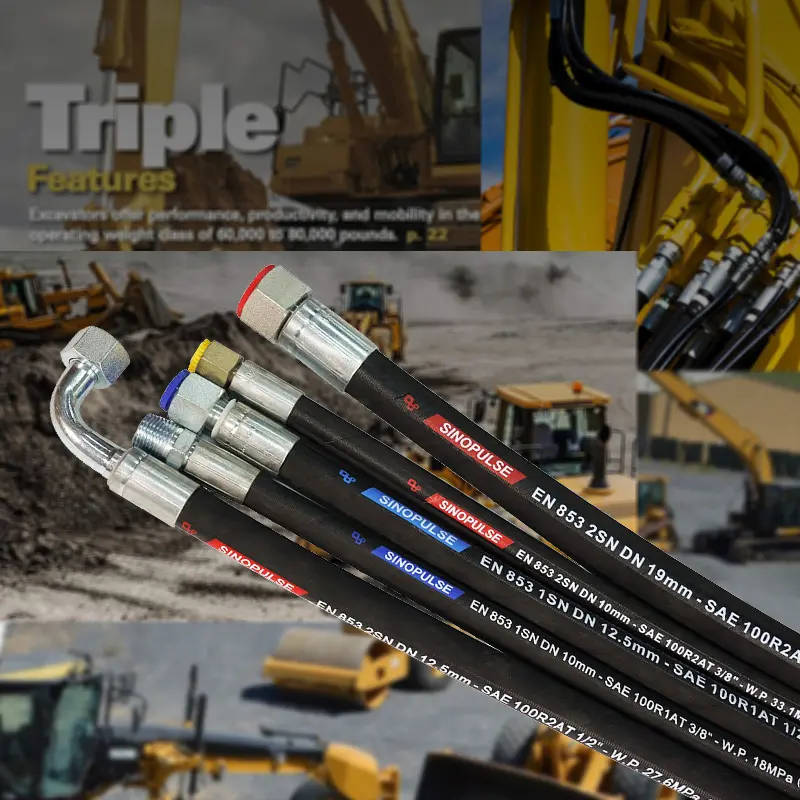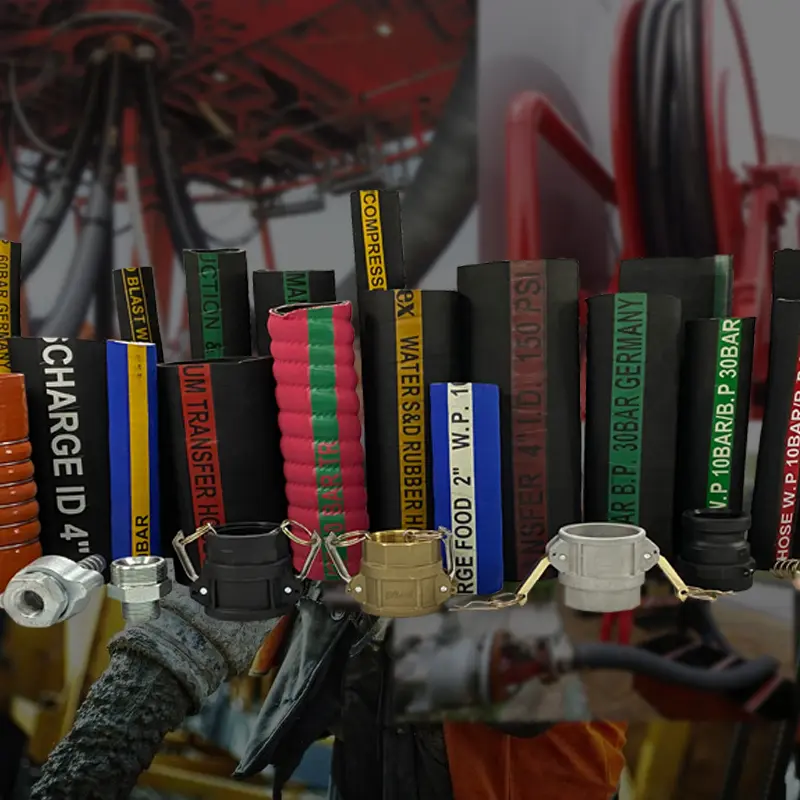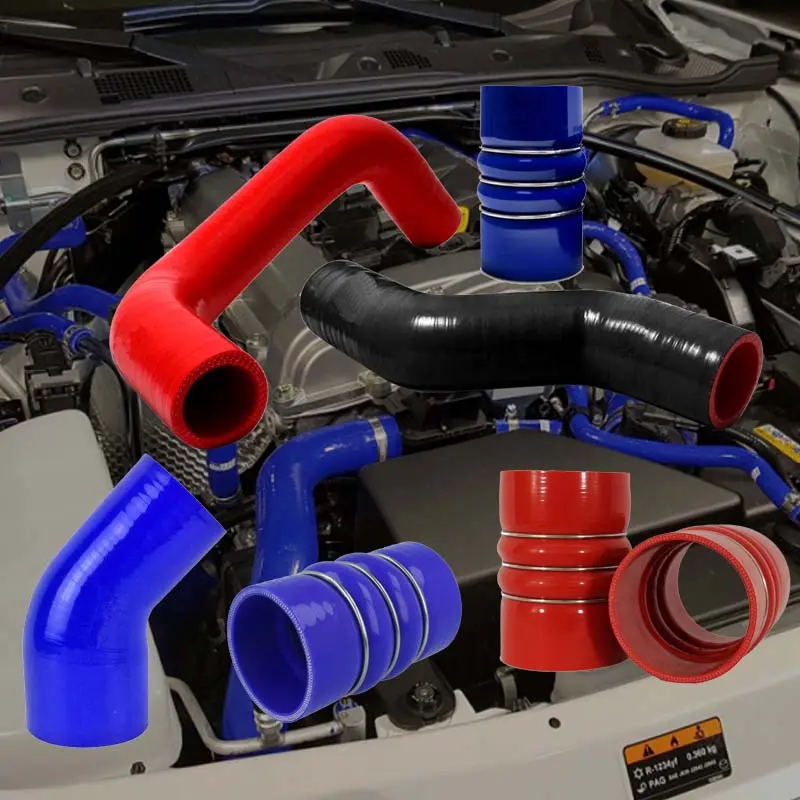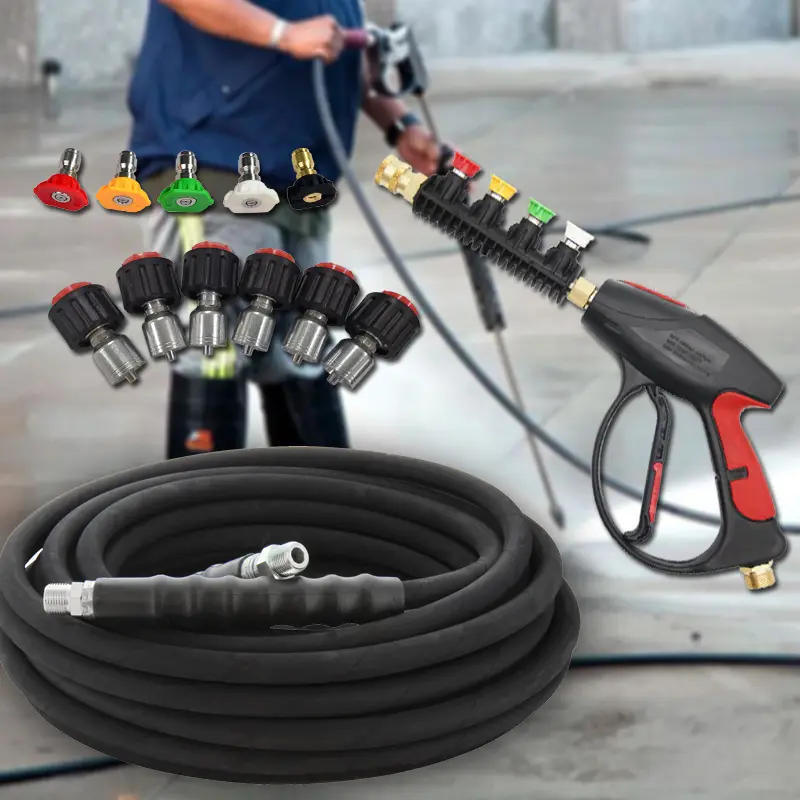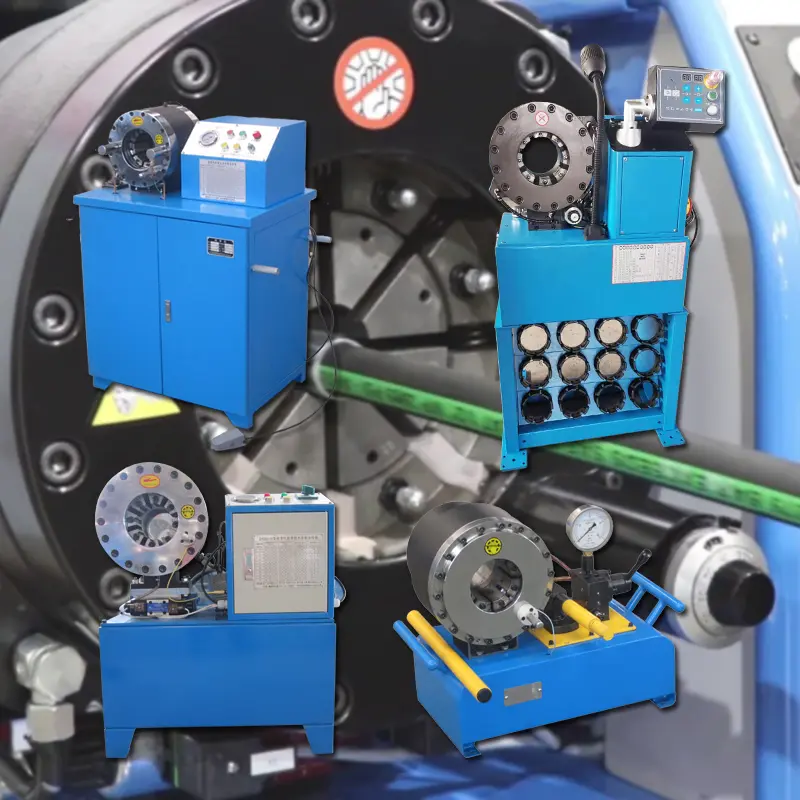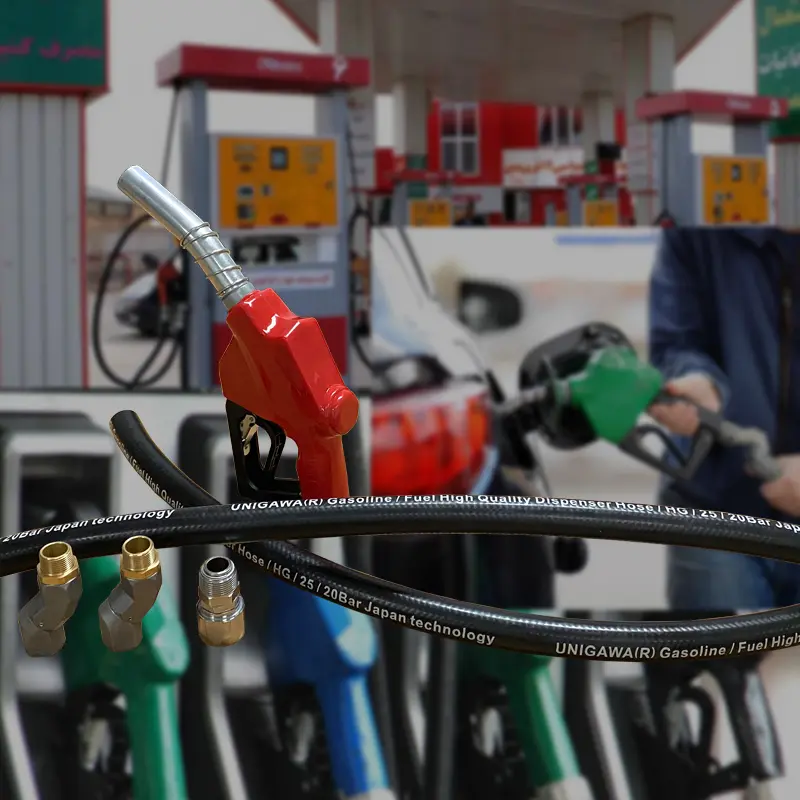The Indispensable Role of High Pressure Rubber Hoses in Modern Industry
In the demanding landscape of industrial operations, the integrity and performance of every component are paramount. Among these, the high pressure rubber hose stands out as a critical element, essential for the safe and efficient transfer of various media under extreme conditions. From corrosive chemicals and abrasive slurries to high-temperature fluids and pneumatic power, these specialized hoses are engineered to withstand pressures that would compromise conventional tubing, ensuring operational continuity and safety across a multitude of sectors.
The modern industrial environment is characterized by relentless innovation and an increasing demand for materials that offer superior resistance to wear, tear, and environmental degradation. This article delves into the sophisticated engineering behind the Pressure Abrasion Sandblast Rubber Hose, examining its unique design, manufacturing processes, and the significant advantages it offers. We will explore the critical technical parameters that define its capabilities, the diverse range of applications where it excels, and the meticulous standards that guarantee its reliability. By providing a comprehensive overview of this vital industrial component, we aim to equip B2B decision-makers and technical personnel with the knowledge necessary to make informed choices that enhance operational efficiency, safety, and longevity.
Understanding the nuances of high pressure rubber hose technology is not merely an academic exercise; it is a strategic imperative for industries striving for peak performance and minimal downtime. This deep dive will cover everything from material science to real-world applications, underpinned by data and expert insights to underscore the unparalleled value of high-quality industrial hoses.
Decoding High-Pressure Rubber Hose Technology and Industry Trends
At its core, a high pressure rubber hose is a flexible conduit designed to transport fluids or gases at elevated pressures. Unlike standard hoses, these are constructed with multiple layers, each contributing to their overall strength, durability, and resistance to specific environmental or chemical factors. The term "high pressure" typically refers to working pressures exceeding 1,000 PSI (pounds per square inch), with some specialized hoses capable of handling upwards of 20,000 PSI or more, making them indispensable in applications where hydraulic or pneumatic power is critical.
Current Industry Trends and Market Dynamics
The market for high pressure rubber hose is experiencing robust growth, driven by several key trends:
- Emphasis on Durability and Longevity: Industries are increasingly demanding hoses with extended service life to reduce replacement costs and minimize operational downtime. This has led to advancements in rubber compounds and reinforcement materials.
- Sustainability and Eco-Friendly Solutions: There's a growing push for hoses manufactured from recyclable materials or those that contribute to energy efficiency by reducing pressure drops. Compliance with environmental regulations, such as REACH and RoHS, is also becoming a standard expectation.
- Smart Hoses and IoT Integration: The emergence of "smart" hoses equipped with sensors for real-time monitoring of pressure, temperature, and wear is gaining traction. This allows for predictive maintenance, preventing costly failures before they occur.
- Customization and Specialization: Generic hoses are being replaced by highly specialized solutions tailored to specific industry needs, including those requiring extreme temperature resistance, chemical inertness, or superior abrasion resistance.
- Global Infrastructure Development: Significant investments in infrastructure, mining, construction, and oil & gas sectors globally continue to fuel demand for reliable high-pressure fluid conveyance systems.
Specifically, the need for an abrasion resistant hose is escalating in sectors like sandblasting, concrete pumping, and mining, where particulate matter can rapidly degrade conventional hoses. The Pressure Abrasion Sandblast Rubber Hose directly addresses this challenge, offering unparalleled resilience against external and internal abrasion, thereby significantly extending its operational lifespan compared to standard rubber hoses.
Market analysis indicates a Compound Annual Growth Rate (CAGR) for industrial rubber hoses is projected to be around 4-6% from 2023 to 2028, primarily driven by industrial expansion and technological advancements in material science. This growth highlights the continuous evolution and critical importance of these engineered solutions in maintaining the pace of global industry.
The Engineering Marvel: Manufacturing Process of Pressure Abrasion Sandblast Rubber Hose
The creation of a robust high pressure rubber hose, particularly one designed for abrasion hose applications like sandblasting, is a sophisticated process that combines advanced material science with precision engineering. It’s not simply about combining rubber and fabric; it’s about strategically layering components to achieve unparalleled strength, flexibility, and resistance.
Key Stages of Manufacturing:
- Inner Tube Extrusion: The process begins with the extrusion of the inner tube (liner). For Pressure Abrasion Sandblast Rubber Hose, this layer is often made from highly specialized synthetic rubber compounds such as SBR (Styrene-Butadiene Rubber), NR (Natural Rubber), or a blend, formulated to provide exceptional hose abrasion resistance. This compound is fed into an extruder, where it is heated and forced through a die to form a continuous tube of precise diameter and wall thickness. The smoothness of the bore is crucial for minimizing pressure drop and preventing material buildup.
- Reinforcement Layer Application: This is where the hose gains its high-pressure capabilities. Depending on the required pressure rating, multiple layers of textile braids (e.g., high-tensile synthetic yarn like polyester or aramid fibers) or steel wire spirals are applied over the inner tube.
- Textile Braiding: In a braiding machine, the yarn is woven around the tube at specific angles (typically 45-55 degrees) to optimize pressure containment and flexibility.
- Steel Wire Spiraling: For extremely high-pressure applications, high-tensile steel wire is spiraled around the tube. This method provides superior burst resistance and rigidity, often seen in hydraulic hoses.
- Outer Cover Extrusion: A robust outer cover, typically made from weather-resistant and ozone-resistant synthetic rubber (like EPDM or modified SBR), is extruded over the reinforcement layers. This cover protects the inner components from environmental damage, UV radiation, ozone, chemicals, and external abrasion hose, ensuring the hose's longevity in harsh outdoor and industrial settings.
- Vulcanization (Curing): The entire hose assembly then undergoes a vulcanization process. This involves heating the hose under pressure, which chemically cross-links the rubber molecules, transforming the pliable rubber into a durable, elastic, and stable material with enhanced mechanical properties and resistance to heat and chemicals. This can be done in autoclaves or continuous curing lines.
- Finishing and Testing: After curing, the hose is cooled, cut to specified lengths, and undergoes rigorous quality control.
Quality Control and Testing Standards:
Every stage of the manufacturing process is subject to stringent quality control, ensuring that each high pressure rubber hose meets international and industry-specific standards. Key testing includes:
- Pressure Testing: Each hose is hydrostatically tested to a specified working pressure and burst pressure, often exceeding ISO 1436 (Rubber hoses and hose assemblies — Wire-braid reinforced hydraulic type) or EN 853/EN 856 standards. This ensures the hose can withstand operational demands without failure.
- Abrasion Resistance Test: For abrasion resistant hose, tests such as the Taber Abraser test or rotary drum abrasion test are conducted to quantify the outer cover and inner tube's resistance to wear, ensuring compliance with industry benchmarks like ISO 6807 (Rubber and plastics hoses and hose assemblies for rotary drilling and vibration applications).
- Flexibility and Bend Radius Test: To ensure the hose can be routed and installed correctly without kinking or structural damage, tests are performed to verify its minimum bend radius.
- Temperature Resistance Test: Hoses are subjected to extreme temperature cycles to confirm their ability to maintain performance in varied thermal environments.
- Adhesion Test: The bond strength between different layers (liner, reinforcement, cover) is tested to ensure delamination does not occur under pressure or stress.
- Dimensional Accuracy: Inner diameter (ID), outer diameter (OD), and wall thickness are precisely measured to conform to specifications.
This comprehensive manufacturing and testing regimen ensures that every Pressure Abrasion Sandblast Rubber Hose leaving the factory is a product of superior engineering, ready to perform reliably in the most challenging industrial applications.
Technical Specifications and Performance Metrics
Selecting the correct high pressure rubber hose requires a thorough understanding of its technical specifications. These parameters define the hose's suitability for specific applications and its overall performance envelope. For the Pressure Abrasion Sandblast Rubber Hose, the design focuses on optimizing both pressure capacity and resistance to abrasive media.
Key Technical Parameters:
- Working Pressure (WP): The maximum continuous pressure the hose can safely withstand during normal operation. This is typically a quarter of the burst pressure, ensuring a significant safety margin.
- Burst Pressure (BP): The minimum pressure at which the hose is expected to rupture. A critical safety parameter.
- Temperature Range: The minimum and maximum temperatures the hose can endure without material degradation or loss of performance. For rubber hoses, this often ranges from -40°C to +100°C (-40°F to +212°F), though specialized compounds can extend this range.
- Inner Diameter (ID) and Outer Diameter (OD): Crucial for flow rate calculations and ensuring compatibility with fittings and connectors.
- Minimum Bend Radius: The smallest radius to which a hose can be bent without causing kinking, damage, or significant reduction in its service life. This is vital for proper installation and routing.
- Abrasion Loss: Measured in mm³ (e.g., DIN ISO 53516), this quantifies the volume of material lost from the hose's inner tube or outer cover when subjected to a standardized abrasive test. Lower values indicate superior abrasion resistance. For high-performance sandblast hoses, typical abrasion loss should be less than 60 mm³, with premium hoses achieving less than 30 mm³.
- Reinforcement Type: Specifies whether the hose uses textile braids (e.g., 2-ply, 4-ply synthetic yarn) or steel wire spirals (e.g., 2-wire, 4-wire, 6-wire spiral), which dictates its pressure rating and flexibility.
- Weight: Important for handling, installation, and overall system design, especially for long runs or portable equipment.
Typical Specifications for High Pressure Rubber Hoses (Example for Pressure Abrasion Sandblast Rubber Hose):
These specifications underline why the Pressure Abrasion Sandblast Rubber Hose is a specialized solution, designed to endure the most aggressive media while maintaining consistent performance and safety. Its construction is a testament to advanced material science and engineering principles, ensuring long-term reliability in harsh operating conditions.
Unrivaled Advantages and Performance: Why Choose a Specialized Solution
The distinct advantages of a purpose-built high pressure rubber hose like the Pressure Abrasion Sandblast Rubber Hose go beyond mere material composition. They lie in the engineered synergy of its components, delivering performance metrics that generic hoses simply cannot match. This leads to significant operational benefits, enhanced safety, and substantial cost savings over time.
Core Technical Advantages:
- Superior Abrasion Resistance: The hallmark of this hose, its inner tube is specifically compounded with wear-resistant polymers (e.g., highly elastic and durable NR/SBR blends) that can withstand the relentless impact and scouring action of abrasive media like sand, shot, glass beads, and slag. This significantly reduces internal hose abrasion, extending the hose's lifespan by up to 5 times compared to standard industrial hoses in similar applications.
- High Pressure Integrity: Reinforced with multiple layers of high-tensile synthetic textile or steel wire, these hoses maintain their structural integrity even under intermittent pressure spikes and continuous high working pressures. This prevents premature bursting, weeping, and ensures consistent media delivery.
- Exceptional Durability and Longevity: The robust construction, including a resilient outer cover, provides excellent resistance to kinking, crushing, weathering, ozone, and UV radiation. This ensures the hose performs reliably in harsh outdoor environments and reduces the frequency of replacements, translating to lower total cost of ownership (TCO).
- Optimized Flow Characteristics: The smooth, consistent bore of the inner tube minimizes friction and turbulence, ensuring efficient transfer of abrasive media. This leads to reduced energy consumption for pumps and compressors, as less power is required to maintain desired flow rates. For instance, a smoother bore can reduce pressure drop by 10-15% compared to hoses with irregular inner surfaces.
- Enhanced Safety Profile: By reducing the likelihood of hose failure (bursts, leaks, blockages), these hoses directly contribute to a safer working environment. Blowouts of high-pressure abrasive media pose severe risks to personnel and equipment, making the reliability of the hose a critical safety feature.
- Versatility Across Media Types: While primarily designed for abrasive media, the robust construction allows for safe transfer of various non-corrosive liquids, slurries, and dry bulk materials, making it a versatile asset in diverse industrial settings.
Consider the economic impact: A major industrial client reported a 40% reduction in hose replacement frequency and a 25% decrease in abrasive media consumption after switching to premium abrasion resistant hose solutions for their sandblasting operations. This was attributed to both the superior wear resistance of the hose and the improved efficiency of abrasive transfer, highlighting tangible operational savings.
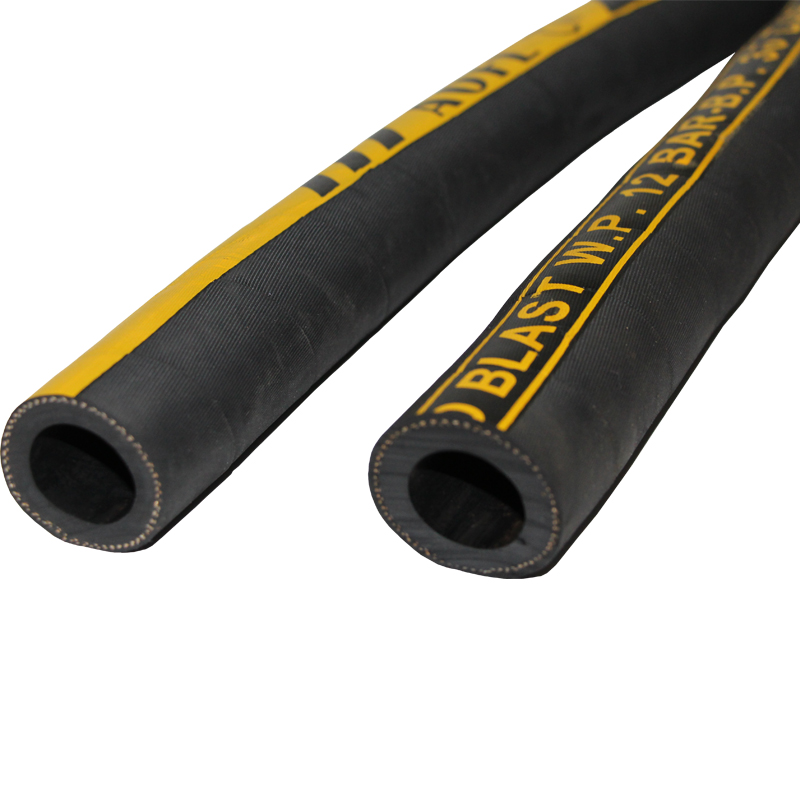
In essence, investing in a specialized Pressure Abrasion Sandblast Rubber Hose is not just a procurement decision; it's a strategic investment in operational efficiency, safety, and long-term cost reduction. Its engineered superiority translates directly into measurable benefits for high-demand industrial applications.
Diverse Application Scenarios: Where Pressure Abrasion Sandblast Rubber Hose Excels
The robust design and specialized properties of the Pressure Abrasion Sandblast Rubber Hose make it indispensable across a broad spectrum of demanding industrial applications. Its ability to withstand high pressures, extreme abrasion, and diverse environmental conditions positions it as a preferred solution in sectors where hose failure can lead to significant downtime, safety hazards, and financial losses.
Primary Application Sectors:
- Abrasive Blasting (Sandblasting): This is arguably the most prominent application. The hose is critical for conveying highly abrasive media (e.g., sand, grit, steel shot, glass beads, coal slag) at high velocity and pressure for surface preparation, rust removal, paint stripping, and texturing. The inner tube's exceptional abrasion resistance ensures long life despite the constant friction and impact from the blasting media. Without a specialized abrasion hose, wear would be rapid, causing frequent bursts and interruptions.
- Mining and Construction: In these sectors, the hose is used for conveying slurries, concrete, gravel, and other highly abrasive materials. It also finds use in drilling operations for water or air lines under high pressure, as well as for pneumatic conveying of dry bulk materials. The rugged outer cover protects against external damage from sharp rocks, vehicle traffic, and heavy machinery, minimizing hose abrasion in rough terrains.
- Oil and Gas (Upstream & Downstream): While specific applications vary, high pressure rubber hose is utilized in drilling operations for mud and cement delivery, as well as for transfer of crude oil, refined products, and various drilling fluids. The ability to handle high pressures and sometimes abrasive fluids (e.g., drilling muds) is crucial.
- Shipbuilding and Repair: Similar to general construction, sandblasting is extensively used for hull preparation and rust removal before painting. The durability and reliability of the sandblast hose directly impact project timelines and safety.
- Water Jetting and Pressure Washing: While dedicated rubber pressure washer hose exists, the robust construction of sandblast hoses can also be adapted for extreme pressure water jetting applications where high flow and pressure are required for heavy-duty cleaning or cutting. Its pressure handling capabilities are well-suited for such tasks.
- Metallurgy and Foundries: Used for conveying abrasive slag, iron ore, or other particulate materials at high temperatures and pressures. The hose's thermal resistance, combined with its abrasion resistance, ensures functionality in these harsh environments.
- Pneumatic Conveying Systems: In industries like plastics, grain, or cement production, this hose can transport dry bulk materials efficiently and safely, minimizing dust and contamination while withstanding the constant abrasive flow.
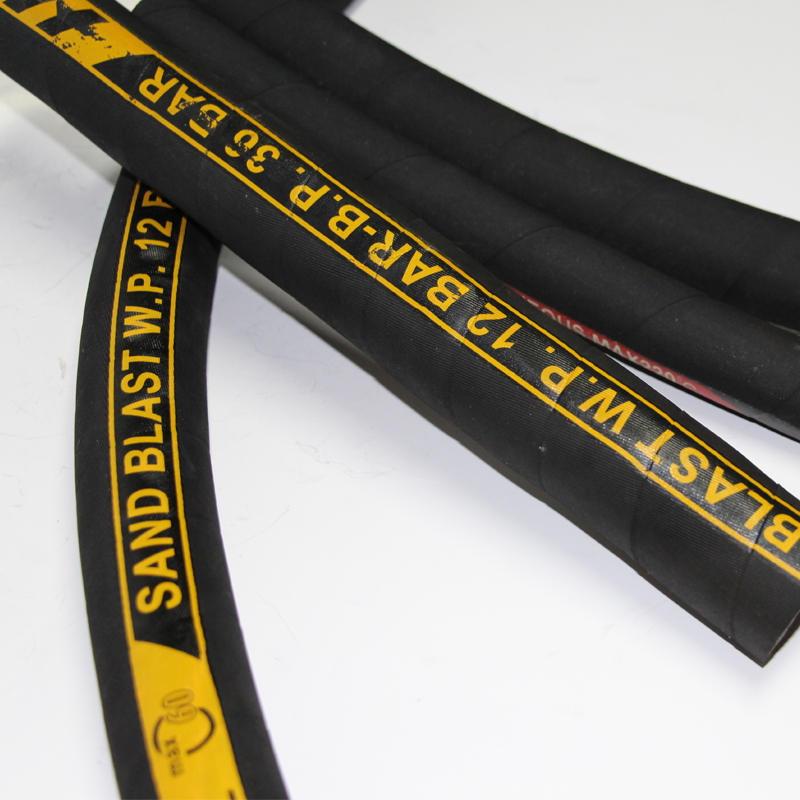
Case Study Snippet: Optimized Sandblasting Efficiency
A large shipyard was experiencing frequent hose failures (every 3-4 months) with their standard blast hoses due to severe internal hose abrasion from grit. This led to significant project delays and high replacement costs. Upon switching to a premium Pressure Abrasion Sandblast Rubber Hose with an inner tube abrasion loss rate of
The ability of the Pressure Abrasion Sandblast Rubber Hose to consistently perform under such harsh and varied conditions underscores its value as a critical component, ensuring reliability and maximizing productivity in the most challenging industrial environments.
Manufacturer Comparison and Tailored Solutions
When sourcing a high pressure rubber hose, particularly for demanding applications like abrasive blasting, the choice of manufacturer is as critical as the product specifications themselves. Not all manufacturers offer the same level of expertise, quality control, or customization capabilities. B2B decision-makers must consider several factors beyond just the price tag.
Factors for Manufacturer Comparison:
- Industry Certifications and Compliance: Look for manufacturers adhering to international standards such as ISO 9001 for quality management, and product-specific certifications like ISO 1436 (for hydraulic hoses) or relevant EN standards for industrial hoses. Compliance with regional safety and environmental directives (e.g., CE marking for Europe) is also crucial.
- Material Science Expertise: A leading manufacturer invests heavily in R&D for rubber compounds, reinforcement materials, and adhesion technologies. Their ability to formulate custom elastomers for specific abrasion, temperature, or chemical resistance needs is a significant differentiator. For abrasion resistant hose, this translates directly to superior wear life.
- Manufacturing Process Transparency: A reputable manufacturer will be transparent about their production processes, including vulcanization methods, quality control checkpoints, and testing protocols. This ensures consistency and reliability across batches.
- Customization Capabilities: For specialized industrial operations, off-the-shelf solutions may not suffice. Manufacturers capable of providing tailored solutions for the Pressure Abrasion Sandblast Rubber Hose demonstrate advanced engineering capabilities.
- Technical Support and After-Sales Service: Comprehensive pre-sales consultation, technical data provision, and robust after-sales support (e.g., troubleshooting, installation guidance, warranty claims) are indicators of a committed partner.
- Track Record and Client Testimonials: Proven experience with major industrial clients and positive feedback on product performance and service delivery are strong indicators of reliability and authority.
The Power of Customization: Tailored Solutions for Unique Needs
Many industrial applications present unique challenges that standard high pressure rubber hose specifications cannot fully address. This is where customized solutions become invaluable. A leading manufacturer understands that a "one-size-fits-all" approach often leads to sub-optimal performance or premature failure.
For the Pressure Abrasion Sandblast Rubber Hose, customization can involve:
- Specific Abrasion Resistance Levels: Tailoring the inner tube compound to resist particular types of abrasive media (e.g., highly angular steel grit vs. softer glass beads) and wear rates. This might involve adjusting the Shore hardness, resilience, or specific polymer blends for the liner.
- Extended Temperature Ranges: Designing hoses that can operate reliably in unusually hot or cold environments, crucial for arctic mining or high-temperature processing plants. This requires specialized EPDM, silicone, or fluoropolymer-based compounds.
- Chemical Compatibility: Formulating an inner tube and outer cover resistant to specific corrosive chemicals or oils that may be present alongside the abrasive media.
- Custom Lengths and End Fittings: Providing precise hose lengths to minimize waste and optimize system layout, along with factory-crimped, specialized end fittings (e.g., quick-disconnect, specific flange types) that ensure leak-proof connections and easy integration into existing equipment. This is particularly important for rubber pressure washer hose assemblies requiring specific nozzle types.
- Enhanced Flexibility or Rigidity: Adjusting the reinforcement layers or rubber durometer to achieve a specific balance between flexibility (for tight routing) and rigidity (for resisting kinking or external compression).
- Color Coding and Branding: For complex systems, custom colors or branding can aid in identification and maintenance.
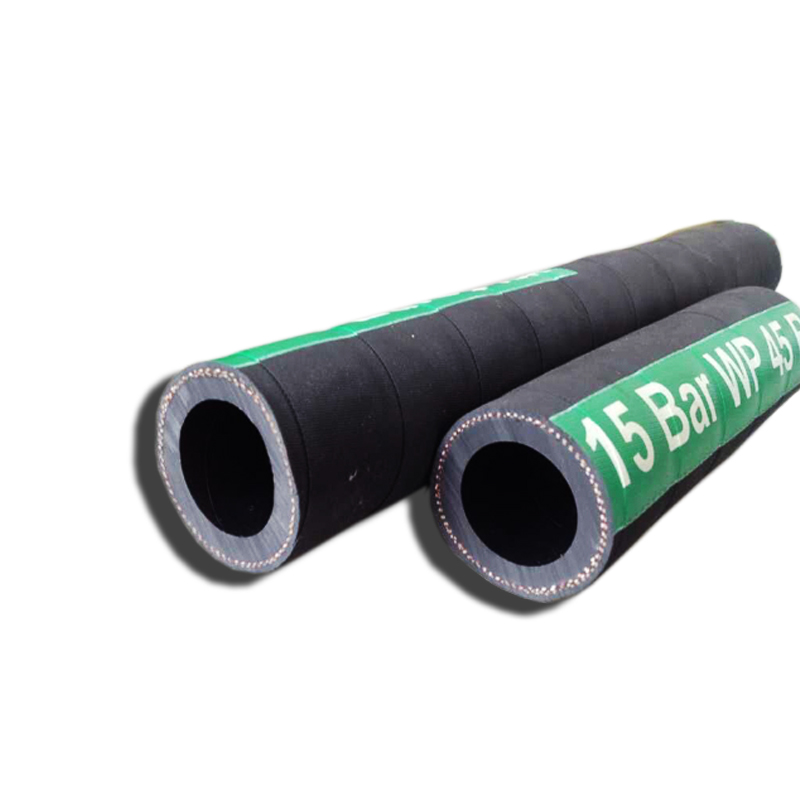
Engaging with a manufacturer that offers strong customization capabilities ensures that you receive a high pressure rubber hose solution perfectly aligned with your operational demands, maximizing efficiency, safety, and long-term value, rather than compromising with generic alternatives that may lead to premature failure and increased operational costs.
Ensuring Trust: Quality Assurance, Warranty, and Support Excellence
For B2B buyers, the decision to invest in a high pressure rubber hose is not just about its initial technical specifications; it's about the assurance of consistent performance, reliability, and robust support throughout its lifecycle. A reputable manufacturer of Pressure Abrasion Sandblast Rubber Hose understands that trust is built on a foundation of rigorous quality assurance, transparent warranty commitments, and responsive customer service.
Comprehensive Quality Assurance Protocols:
Our commitment to quality is embedded in every stage of the manufacturing process, from raw material sourcing to final product inspection. Key aspects include:
- Certified Raw Materials: Only premium-grade synthetic rubbers, high-tensile textile reinforcements, and adhesion systems from approved suppliers are utilized. Incoming materials undergo strict quality checks to ensure they meet specified mechanical and chemical properties.
- In-Process Quality Control: Continuous monitoring of critical parameters such as extrusion dimensions, reinforcement tension, and curing temperatures during production. This ensures uniformity and consistency, preventing defects before they propagate.
- Batch Testing and Traceability: Every production batch of abrasion resistant hose undergoes comprehensive testing. Each hose length is marked with a unique identifier, allowing for full traceability from raw material to final product. This includes burst pressure tests, adhesion tests, and hose abrasion resistance verification.
- Adherence to International Standards: Our manufacturing processes and products rigorously comply with international standards such as ISO 9001 (Quality Management System) and relevant industry-specific standards (e.g., various EN and ISO norms for pressure hoses). This signifies a globally recognized benchmark for quality and consistency.
- 100% Hydrostatic Testing: Every single high pressure rubber hose assembly undergoes hydrostatic proof testing to ensure it can withstand its rated working pressure, identifying any potential weaknesses before shipment.
- Third-Party Verifications: Where applicable, products can be subjected to independent third-party inspections and certifications to provide an unbiased validation of quality and performance.
Reliable Delivery and Transparent Warranty:
We understand the critical nature of timely delivery in industrial projects. Our logistics and production planning are optimized to ensure efficient order fulfillment and on-time delivery, minimizing your project delays. Typical delivery lead times are communicated clearly at the time of order confirmation, with options for expedited shipping when required.
Our Pressure Abrasion Sandblast Rubber Hose products are backed by a comprehensive warranty, typically covering manufacturing defects and material failures for a specified period (e.g., 12 to 24 months from the date of purchase or installation). This warranty underscores our confidence in the quality and durability of our hoses. Full terms and conditions are provided, ensuring transparency and accountability for our products.
Dedicated Customer Support and Technical Assistance:
Our commitment extends beyond product delivery. We provide robust customer support designed to assist you at every stage:
- Expert Technical Consultation: Our team of engineers and product specialists is available to provide detailed technical advice, helping you select the most appropriate high pressure rubber hose for your specific application, taking into account pressure, temperature, media, and environmental factors.
- Installation and Maintenance Guidance: We offer best practice guidelines for the proper installation, routing, and maintenance of our hoses to maximize their service life and ensure operational safety. This includes advice on proper fitting selection for rubber pressure washer hose assemblies and abrasive blasting setups.
- Troubleshooting Support: In the unlikely event of an issue, our support team is ready to assist with diagnosing problems and providing effective solutions, minimizing your downtime.
- Replacement Parts and Services: We ensure the availability of genuine replacement parts and offer services for hose assembly and repair where feasible, prolonging the lifespan of your investment.
This holistic approach to quality, warranty, and customer support ensures that when you choose our Pressure Abrasion Sandblast Rubber Hose, you are not just purchasing a product, but a partnership built on reliability, expertise, and unwavering commitment to your operational success.
Frequently Asked Questions (FAQ) about High Pressure Rubber Hoses
Q1: What makes a high pressure rubber hose "high pressure"?
A1: A high pressure rubber hose is distinguished by its multi-layered construction, specifically the reinforcement layers. These typically consist of high-tensile textile braids (e.g., polyester, aramid) or steel wire spirals. The number and type of these layers, along with the quality of the rubber compounds, dictate the hose's ability to withstand elevated internal pressures without bursting or deforming. Standard industrial hoses often lack these robust reinforcement structures.
Q2: How does the Pressure Abrasion Sandblast Rubber Hose differ from a regular industrial hose?
A2: The primary difference lies in the inner tube's composition and thickness. A Pressure Abrasion Sandblast Rubber Hose features an extra-thick inner tube made from specialized, highly resilient synthetic rubber compounds designed to resist the severe internal hose abrasion caused by high-velocity abrasive media (like sand, grit, or shot). Regular industrial hoses are not engineered for such abrasive conditions and would fail prematurely.
Q3: What factors influence the lifespan of an abrasion resistant hose?
A3: Several factors affect the lifespan of an abrasion resistant hose: the abrasiveness of the conveyed material, media velocity, operating pressure and temperature, frequency of use, proper installation (avoiding kinks or tight bends), environmental exposure (UV, ozone, chemicals), and correct fitting usage. Regular inspection and adherence to manufacturer guidelines are crucial for maximizing life.
Q4: Can a rubber pressure washer hose be used for sandblasting?
A4: While a rubber pressure washer hose is designed for high water pressure, it is generally NOT suitable for sandblasting. Pressure washer hoses lack the specialized abrasion resistant inner tube required to withstand the constant scouring action of abrasive dry media. Using a pressure washer hose for sandblasting will lead to rapid internal wear, loss of pressure, and dangerous blowouts.
Q5: How do I ensure I'm selecting the right high pressure rubber hose for my application?
A5: Always follow the STAMPED acronym:
- Size (ID, OD, Length)
- Temperature (Min/Max operating temperature of fluid and ambient)
- Application (What is the hose used for? Is abrasion, kinking, or crushing a concern?)
- Media (What fluid/material is being conveyed? Chemical compatibility?)
- Pressure (Working Pressure, Burst Pressure, system surges)
- Ends (Type of fittings/couplings required)
- Delivery (Volume/Flow Rate, delivery requirements) Consulting with a hose expert or manufacturer is highly recommended for critical applications.
Conclusion: The Imperative of Specialized High Pressure Rubber Hoses
In the demanding operational landscapes of industries requiring reliable fluid and material conveyance under extreme conditions, the role of a specialized high pressure rubber hose cannot be overstated. The Pressure Abrasion Sandblast Rubber Hose epitomizes the advancements in material science and engineering, offering a solution specifically tailored to address the formidable challenges of high-pressure, highly abrasive applications.
From its meticulously engineered multi-layered construction and selection of advanced rubber compounds for superior abrasion resistance, to its rigorous testing against international standards, every aspect of this hose is designed for longevity, efficiency, and paramount safety. Its ability to significantly extend service life in environments that rapidly degrade conventional hoses translates directly into reduced operational costs, minimized downtime, and enhanced productivity for businesses across mining, construction, sandblasting, and other heavy industries.
The insights shared, including detailed technical parameters, a transparent overview of the manufacturing process, and an emphasis on the critical role of customization and robust quality assurance, underscore the strategic value of choosing a purpose-built solution. Investing in a premium abrasion hose is not merely a purchase; it is a proactive step towards optimizing operational performance, ensuring worker safety, and securing a competitive edge in today's challenging industrial climate. By selecting a trusted manufacturer committed to quality, innovation, and comprehensive support, industries can harness the full potential of these indispensable components and achieve new benchmarks in efficiency and reliability.
Embrace the power of specialized engineering to transform your most demanding applications with the proven performance of the Pressure Abrasion Sandblast Rubber Hose.
References
- ISO 1436:2016, Rubber hoses and hose assemblies — Wire-braid reinforced hydraulic type — Specification. International Organization for Standardization.
- ISO 53516:2020, Rubber, vulcanized or thermoplastic — Determination of abrasion resistance (Rotary drum abrader). International Organization for Standardization.
- ASTM D622-05, Standard Test Methods for Testing Rubber Hoses. ASTM International.
- EN 853:2018, Hydraulic hose assemblies with rubber or thermoplastic hose and metal fittings for use with petroleum-based hydraulic fluids and water-based fluids. European Standard.
- Scherer, M., & Scherer, S. (2018). Industrial Hose Handbook: A Guide to Selection and Application. Fluid Power Society.
- Rubber Manufacturers Association. (2020). RMA Hose Handbook.
- Fluid Power Journal. (Various Issues). Articles on hydraulic and industrial hose technology advancements.
- Parker Hannifin Corporation. (2022). Hose & Fittings Catalog.
Product Application









